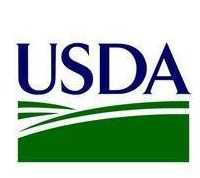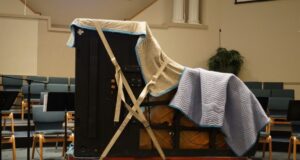Written Testimony of Chief of Homeownership Preservation Office Phyllis Caldwell Before the House Financial Services Subcommittee on Housing and Community Opportunity
“Robo-Signing, Chain of Title, Loss Mitigation and Other Issues in Mortgage Servicing”
WASHINGTON, D.C. – November 18, 2010 – (RealEstateRama) — Chairwoman Waters, Ranking Member Capito, and Members of the Subcommittee, thank you for the opportunity to testify today regarding loss mitigation and issues surrounding mortgage servicing. The testimony will cover two key areas: first, the steps we are taking to ensure that servicers participating in the Making Home Affordable (MHA) program are adhering to program guidelines in light of the recent foreclosure issues, and second, the accomplishments of MHA to date and its impact on mortgage servicing.
The reports of “robo-signing”, faulty documentation and other improper foreclosure practices by mortgage servicers are unacceptable. If servicers have failed to comply with the law, they should be held accountable. The Administration is leading a coordinated interagency effort to investigate misconduct, protect homeowners and mitigate any long-term effects on the housing market. While Treasury does not have the authority to regulate the foreclosure practices of financial institutions, nor to ensure that those practices conform to the law, it is working closely with agencies that do have such authority.
The Financial Fraud Enforcement Task Force, a broad coalition of law enforcement, investigatory, and regulatory agencies that brings together more than 20 federal agencies, 94 U.S. Attorneys Offices, and dozens of state and local partners, is working to ensure that foreclosure practices are thoroughly investigated and any criminal behavior is prosecuted. The Federal Housing Administration (FHA) has been reviewing servicers for compliance with loss mitigation requirements. Additionally, the Office of the Comptroller of the Currency has directed all large national bank servicers to review their foreclosure management processes – including file reviews, affidavit processing, and signatures – to ensure that the processes are fully compliant with all applicable state laws. The other independent banking regulatory agencies are doing similar reviews of institutions under their jurisdiction. Attached to my testimony is a fact sheet providing more detail concerning the activities of the coordinated interagency effort.
Because MHA and its first lien program, the Home Affordable Modification Program (HAMP), are pre-foreclosure programs, the recent reports of robo-signing of affidavits and improper foreclosure documentation do not directly affect the implementation of HAMP. But these documentation failures reflect the fact that servicers did not have the proper resources in place, nor did they have procedures and controls in place to prevent this crisis. As we have learned in implementing HAMP, servicers were historically structured and staffed to perform a limited role–primarily collecting payments. They did not have the systems, staffing, operational capacity or incentives to engage with homeowners on a large scale and offer meaningful relief from unaffordable mortgages.
The foreclosure problems underscore the continued critical importance of the Making Home Affordable Program launched by the Obama Administration. Preventing avoidable foreclosures through modifications and other alternatives to foreclosure continues to be a critical national priority. Foreclosure is painful for homeowners; it is also costly to servicers and investors. Foreclosures dislocate families, disrupt the communities, and destabilize local housing markets. For this reason, the Obama Administration launched the Making Home Affordable program in the spring of 2009, of which HAMP is a key component. HAMP is intended to prevent avoidable foreclosures by providing financial incentives to servicers, investors and borrowers to voluntarily undertake modifications of mortgages for responsible homeowners in a way that is affordable and sustainable over time. In cases where a modification is not possible, the participating servicers must consider other alternatives to foreclosure.
As a result, throughout the last 20 months, we have worked to develop systems and procedures to ensure that responsible homeowners are offered meaningful modifications and other foreclosure alternatives. To remedy servicer shortcomings, we have urged servicers to rapidly increase staffing and improve customer service. We have developed specific guidelines and certifications on how and when borrowers must be evaluated for HAMP and other loss mitigation options prior to foreclosure initiation. We have also continued our compliance efforts to ensure borrowers are fairly evaluated and that servicer operations reflect Treasury guidance. MHA has strong compliance mechanisms in place to ensure that servicers follow our program’s guidelines.
HAMP Procedural Safeguards and Compliance Efforts
Treasury has built numerous procedural safeguards in HAMP to avoid foreclosure sales. Specifically, program guidelines require participating mortgage servicers to:
- Evaluate homeowners for HAMP modifications before referring them for foreclosure. The focus here is on early intervention. Servicers must reach out to all potentially eligible borrowers when they are only two months delinquent and there is a still a viable opportunity to save the loan;
- Suspend any foreclosure proceedings against homeowners who have applied for HAMP modifications, while their applications are pending;
- Evaluate whether homeowners who do not qualify for HAMP (or who have fallen out of HAMP) qualify for alternative loss mitigation programs or private modification programs;
- Evaluate whether homeowners who cannot obtain alternative modifications may qualify for a short sale or deed-in-lieu of foreclosure; and
- Provide a written explanation to any borrower who is not eligible for modification and delay foreclosure for at least 30 days to give the homeowner time to appeal.
Servicers may not proceed to foreclosure sale unless and until they have tried these alternatives. They must also first issue a written certification to their foreclosure attorney or trustee stating that “all available loss mitigation alternatives have been exhausted and a non-foreclosure option could not be reached.” On October 6, Treasury clearly reminded servicers of this existing requirement that they are prohibited from conducting foreclosure sales until these pre-foreclosure certifications are executed.
The MHA compliance program is designed to ensure that servicers are meeting their obligations under the MHA servicer contracts for loans where Fannie Mae or Freddie Mac is not the investor, and uses a variety of compliance activities to assess servicers from different perspectives. Treasury has engaged a separate division of Freddie Mac, Making Home Affordable-Compliance (MHA-C), to perform these compliance activities. Employing a risk-based approach, compliance activities are performed ranging generally monthly for servicers with the largest percentages of potentially eligible borrowers, to at least twice annually for the smaller-sized servicers.
Our compliance activities focus on ensuring that homeowners are appropriately treated in accordance with MHA guidelines. As the program has evolved, servicers have adapted their processes to incorporate MHA programs. Treasury has implemented non-financial remedies that have shaped servicer behavior in order to address the most vital issue: the ultimate impact on the homeowner.
As information regarding irregularities in servicer foreclosure practices arose, Treasury acted swiftly and instructed MHA-C to review the ten largest servicers’ internal policies and procedures for completing these pre-foreclosure certifications before initiating the foreclosure proceedings, and to assess a limited sample of foreclosure sales that have occurred since the effective date of the guidance. The results of the review are not yet available. However, if MHA-C identifies any incidents of non-compliance with HAMP guidelines, Treasury will direct servicers to take appropriate corrective action, which may include suspending foreclosure proceedings and re-evaluating the affected homeowners for HAMP, as well as undertaking changes to servicing processes to help ensure that HAMP guidelines are followed prior to initiating the foreclosure process.
HAMP’s Accomplishments and Its Impact on the Mortgage Industry
To date, HAMP has achieved three critical goals: it has provided immediate relief to many struggling homeowners; it has used taxpayer resources efficiently; and it has helped transform the way the entire mortgage servicing industry operates.
Twenty months into the program, close to 1.4 million homeowners have entered into HAMP trials and experienced temporary reductions in their mortgage payments. Of these, almost 520,000 homeowners converted to permanent modifications. These homeowners are experiencing a 36 percent median reduction in their mortgage payments–averaging more than $500 per month–amounting to a total, program-wide savings of nearly $3.7 billion annually for homeowners.
Early indications suggest that the re-default rate for permanent HAMP modifications is significantly lower than for historical private-sector modifications–a result of the program’s focus on properly aligning incentives and achieving greater affordability. For HAMP modifications made in the fourth quarter of 2009, at six months, fewer than 10 percent of permanent modifications are 60+ days delinquent. According to the OCC’s Mortgage Metrics Report, the comparable delinquency rates for non-HAMP modifications made in the same quarter were 22.4 percent. Regarding HAMP re-defaults, the OCC states, “These lower early post-modification delinquency rates may reflect HAMP’s emphasis on the affordability of monthly payments and the requirements to verify income and complete a successful trial period.”
Borrowers who do not ultimately qualify for HAMP modifications often receive alternative forms of assistance. Based on survey data from the eight largest servicers, approximately one-half of homeowners who apply for HAMP modifications but do not qualify have received some form of private-sector modification. Less than ten percent have lost their homes through foreclosure sales.
HAMP uses taxpayer resources efficiently. HAMP’s “pay-for-success” design utilizes a trial period to ensure that taxpayer-funded incentives are used only to support borrowers who are committed to staying in their homes and making monthly payments, and the investor retains the risk of the borrower re-defaulting into foreclosure. No taxpayer funds are paid to a servicer or an investor until a borrower has made three modified mortgage payments on time and in full. The majority of payments are made over a three to five-year period only if the borrower continues to fulfill this responsibility. These safeguards ensure that spending is limited to high-quality modifications.
MHA Has Been a Catalyst–Setting the Benchmark for Sustainable Modifications
MHA has transformed the way the mortgage servicing industry deals with alternatives to foreclosure. Because of MHA, servicers have developed constructive private-sector options. Where there was once no consensus plan among loan servicers about how to respond to borrowers in need of assistance, HAMP established a universal affordability standard: a 31 percent debt-to-income ratio, which dramatically enhanced servicers’ ability to reduce mortgage payments to sustainable levels while simultaneously providing the necessary justification to investors for the size and type of modification.
In the year following initiation of HAMP, home retention strategies changed dramatically. According to the OCC/ OTS Mortgage Metrics Report, in the first quarter of 2009, nearly half of mortgage modifications increased borrowers’ monthly payments or left their payments unchanged. By the second quarter of 2010, 90 percent of mortgage modifications lowered payments for the borrower. This change means borrowers are receiving better solutions. Modifications with payment reductions perform materially better than modifications that increase payments or leave them unchanged.
Moreover, even holding the percentage payment reduction constant, the quality of modifications made by servicers appears to have improved since 2008. For modifications made in 2008, 15.8 percent of modifications that received a 20 percent payment reduction were 60 days or more delinquent three months into the modification. For modifications made in 2010, that delinquency rate has fallen almost in half, to 8.2 percent. The OCC’s Mortgage Metrics Report from 2010:Q2 attributes the improvement in mortgage performance to “servicer emphasis on repayment sustainability and the borrower’s ability to repay the debt.”
Spurred by the catalyst of the HAMP program, the number of modification arrangements was nearly three times greater than the number of foreclosure completions between April 2009 and August 2010. More than 3.7 million modification arrangements were started, including the close to 1.4 million trial HAMP modification starts, more than 568,000 FHA loss mitigation and early delinquency interventions, and more than 1.6 million proprietary modifications by servicing members of the HOPE NOW Alliance.
Further, it is important to keep in mind that MHA is only one of many Administration housing efforts targeting these challenges: the Administration has also provided substantial support for the housing markets through support for Fannie Mae and Freddie Mac to help keep mortgage rates affordable; purchase of agency mortgage-backed securities; and an initiative to provide support and financing to state and local Housing Finance Agencies (HFAs). These HFAs provide, in turn, tens of thousands of affordable mortgages to first time homebuyers and help develop tens of thousands of affordable rental units for working families.
Responding to a Changing Housing Crisis
MHA was designed to be a versatile program. MHA includes a second lien modification program, a foreclosure alternatives program that promotes short sales and deeds-in-lieu of foreclosures, and an unemployment forbearance program. Treasury expanded HAMP to include FHA and Rural Development mortgage loans through the FHA-HAMP and RD-HAMP program, and also introduced a principal reduction option. Finally, Treasury introduced a program to allow the hardest-hit states to tailor housing assistance to their areas, and worked with FHA to introduce an option for homeowners with high negative equity to refinance into a new FHA loan if their lender agrees to reduce principal on the original loan by at least ten percent.
Second Lien Modification Program
The Second Lien Modification Program (referred to as 2MP) requires that when a borrower’s first lien is modified under HAMP and the servicer of the second lien is a 2MP participant, that servicer must offer to modify the borrower’s second lien according to a defined protocol. 2MP provides for a lump sum payment from Treasury in exchange for full extinguishment of the second lien, or a reduced lump sum payment from Treasury in exchange for a partial extinguishment and modification of the borrower’s remaining second lien. Although 2MP was initially met with reluctance from servicers and investors who did not want to recognize losses on their second lien portfolios, as of October 3, 2010, Treasury has signed up seventeen 2MP servicers, which includes the four largest mortgage servicers, who in aggregate service approximately 60 percent of outstanding second liens. The program uses a third-party database to match second lien loans with first lien loans permanently modified under HAMP. Servicers are required to modify second lien loans within 120 days from the date the servicer receives the first lien and second lien matching information. The implementation of this database began over the summer. Five 2MP Servicers have already begun matching modified first liens with their corresponding second liens, while the other twelve are in some phase of developing systems capacity to do so. Information on the second lien program will be included in upcoming Monthly Servicer Performance Reports as data becomes available.
Home Affordable Foreclosure Alternatives Program
Any modification program seeking to avoid preventable foreclosures has limits, HAMP included. HAMP does not, nor was it ever intended to, address every delinquent loan. Borrowers who do not qualify for HAMP may benefit from an alternative program that helps the borrower transition to more affordable housing and avoid the substantial costs of a foreclosure. Under HAFA, Treasury provides incentives for short sales and deeds-in-lieu of foreclosure for circumstances in which borrowers are unable to complete the HAMP modification process or decline a HAMP modification. Borrowers are eligible for a relocation assistance payment, and servicers receive an incentive for completing a short sale or deed-in-lieu of foreclosure. In addition, investors are paid additional incentives for allowing some short sale proceeds to be distributed to subordinate lien holders. The Home Affordable Foreclosure Alternatives (HAFA) Program became effective on April 5, 2010.
Unemployment Program
In March 2010, the Obama Administration announced enhancements to HAMP aimed at unemployment problems by requiring servicers to provide temporary mortgage assistance to many unemployed homeowners. The Unemployment Program (UP) requires servicers to grant qualified unemployed borrowers a forbearance period during which their mortgage payments are temporarily reduced for a minimum of three months, and up to six months for some borrowers, while they look for a new job. Servicers are prohibited from initiating a foreclosure action or conducting a foreclosure sale (a) while the borrower is being evaluated for UP, (b) after a foreclosure plan notice is mailed, (c) during the UP forbearance or extension, or (d) while the borrower is being evaluated for or participating in HAMP or HAFA following the UP forbearance period. UP went in to effect August 1, 2010. Because no incentives are paid under UP, data reports will be based on servicer surveys.
Principal Reduction Alternative
The Administration announced further enhancements to HAMP in March 2010 by encouraging servicers to write down mortgage debt as part of a HAMP modification (the Principal Reduction Alternative, or PRA). Under PRA, servicers are required to evaluate the benefit of principal reduction and are encouraged to offer principal reduction whenever the net present value (NPV) result of a HAMP modification using PRA is greater than the NPV result without considering principal reduction. The principal reduction and the incentives based on the dollar value of the principal reduced will be earned by the borrower and investor based on a pay-for-success structure. Under the contract with each servicer, Treasury cannot compel a servicer to select PRA over the standard HAMP modification even if the NPV of PRA is greater than the NPV of regular HAMP. However, Treasury has required servicers to have written policies for PRA to help ensure that similarly situated borrowers are treated consistently. The program became operational October 1, 2010 and the four largest servicers have indicated an intention to offer PRA to homeowners.
FHA Refinance
Also in March 2010, the Administration announced adjustments to existing FHA refinance programs that permit lenders to provide additional refinancing options to homeowners who owe more than their homes are worth because of large declines in home prices in their local markets. This program, known as the FHA Short Refinance option, will provide more opportunities for qualifying mortgage loans to be restructured and refinanced into FHA-insured loans.
In order to qualify for this program, a homeowner must be current on their existing first lien mortgage; the homeowner must occupy the home as a primary residence and have a qualifying credit score; the mortgage owner must reduce the amount owed on the original loan by at least 10 percent; the new FHA loan must have a balance of no more than 97.75% of the current value of the home; and total mortgage debt for the borrower after the refinancing, including both the first lien mortgage and any other junior liens, cannot be greater than 115% of the current value of the home – giving homeowners a path to regain equity in their homes and affordable monthly payments. Program guidance was issued to participating FHA servicers in September 2010.
HFA Hardest-Hit Fund
On February 19, 2010, the Administration announced the Housing Finance Agency Innovation Fund for the Hardest Hit Housing Markets (HFA Hardest-Hit Fund) for state HFAs in the nation’s hardest-hit housing markets to design innovative, locally targeted foreclosure prevention programs. In total, $7.6 billion has been allocated to 18 states (Alabama, Arizona, California, Florida, Georgia, Illinois, Indiana, Kentucky, Michigan, Mississippi, Nevada, New Jersey, North Carolina, Ohio, Oregon, Rhode Island, South Carolina, and Tennessee) and the District of Columbia in four rounds of funding under the HFA Hardest-Hit Fund. As of October 2010, three states were either accepting applications or providing assistance (Arizona, Michigan and Ohio). By the end of 2010 another three states are expected to begin providing assistance. The remaining states are expected to begin providing assistance in the first half of 2011.
Allocations under the HFA Hardest-Hit Fund were made using several different metrics. Some of the funds were allocated to states that have suffered average home price drops of more than 20 percent from their peak, while other funds were allocated to states with the highest concentration of their populations living in counties with unemployment rates greater than 12 percent or unemployment rates that were at or above the national average. In addition, some funds were allocated to all the states and jurisdictions already participating in the HFA Hardest-Hit Fund to expand the reach of their programs to help more struggling homeowners. The applicable HFAs designed the state programs themselves, tailoring the housing assistance to their local needs. A minimum of $2 billion of the funding is required to be used by states for targeted unemployment or under-employment programs that provide temporary assistance to eligible homeowners to help them pay their mortgages while they seek re-employment or additional employment or undertake job training. Treasury also required that all of the programs comply with the requirements of EESA, which include that they must be designed to prevent avoidable foreclosures. All of the funded program designs are posted online at http://www.FinancialStability.gov/roadtostability/hardesthitfund.html.
Transparency, Accountability, and Compliance
I would like to provide you with further detail regarding the compliance efforts regarding HAMP. To protect taxpayers and ensure that TARP dollars are directed toward promoting financial stability, Treasury established rigorous transparency and accountability measures for all of its programs, including all housing programs. In addition, every borrower is entitled to a clear explanation if he or she is determined to be ineligible for a HAMP modification. Treasury requires servicers to report the reason for modification denials in the HAMP system of record. MHA-C’s compliance activities, through Second Look loan file reviews and other on-site assessments, evaluate the appropriateness of the denials as well as the timeliness and accuracy of the denial notification to the affected borrowers.
In order to improve transparency of the HAMP NPV model, which is a key component of the eligibility test for HAMP, Treasury increased public access to the NPV white paper, which explains the methodology used in the NPV model. To ensure accuracy and reliability, MHA-C conducts periodic audits of servicers’ NPV practices. MHA-C conducts two types of reviews related to NPV. For those servicers that have re-coded the requirements of the NPV model in their processing systems, MHA-C conducts on-site and off-site reviews of model accuracy, model management, and data integrity and inputs. For those servicers using the MHA Servicer Portal, MHA-C conducts reviews of data integrity and inputs. Where non-compliance is found, Treasury requires servicers to take remedial actions, which can include re-evaluating borrowers with appropriate inputs, process changes, corrections to recoded NPV implementations, and, for servicers who have re-coded the NPV model, reverting back to the MHA Servicer Portal for loans with negative NPV results from the servicers’ re-coded NPV model until necessary corrections have been re-evaluated by MHA-C. In addition, as required by the Dodd-Frank Wall Street Reform and Consumer Protection Act, Treasury is preparing to establish a web portal that borrowers can access to run a NPV analysis using input data regarding their own mortgages, and to provide to borrowers who are turned down for a HAMP modification the input data used in evaluating the application.
As stated above, servicers are subject to various other compliance activities, including periodic, on-site compliance reviews as well as on-site and off-site loan file reviews. These various compliance activities performed by MHA-C assess servicers’ compliance with HAMP requirements. Treasury works closely with MHA-C to adapt and execute our risk based compliance activities quickly based on changes in the program as well as observed trends. The current assessment of the top ten servicers’ adherence to our pre-foreclosure certifications and requirements is one example of how we adapt our compliance activities. MHA-C provides Treasury with the results from each of the various compliance activities conducted. Treasury performs quality reviews of these activities and evaluates the nature and scope of any instances of non-compliance, and assesses appropriate responses, including remedies, in a consistent manner. As stated earlier, during the beginning of the program, and as additional features (e.g., the Second Lien Program) are introduced, Treasury’s compliance activities and associated remedies focus on shaping servicers’ behavior and improving processes as servicers ramp up or modify their implementation of HAMP. As the program and servicers’ processes mature, financial remedies may become more appropriate and effective in reinforcing Treasury’s compliance and performance expectations.
Looking Ahead for Housing
Servicers need to increase efforts in helping borrowers avoid foreclosure through modification, as well as other alternatives to foreclosure, such as short sales. Furthermore, as we have learned through HAMP, servicers must be held accountable for ensuring that their foreclosure processes have integrity and are used after all loss mitigation options have been exhausted. Treasury’s main priority is to ensure that first, participating servicers are doing everything that they can to reach, evaluate, and start borrowers into HAMP modifications, second, if a HAMP modification is not possible, every servicer is properly evaluating each homeowner for all other potential options to prevent a foreclosure, including HAFA or one of their own modification programs, and third, servicers are utilizing programs such as UP or the HFA Hardest-Hit Fund to their fullest ability in order to prevent avoidable foreclosures.
Over the past 20 months, we have been actively engaged with stakeholders from across the housing sector to find ways to increase the pace of new HAMP modifications, improve the characteristics of those modifications, and improve the borrower experience. We sincerely appreciate the assistance that we have gotten from Members of Congress and the advocacy community in strengthening borrower protections, incentivizing principal reduction, and assisting the unemployed. And most importantly, we value the efforts that Members of Congress, counselors and advocates have made in holding servicers accountable.
Yet, as we deploy a comprehensive suite of loss mitigation options, we must remember, as the President noted, not every foreclosure can be prevented. Any broad-based solution must aim at achieving both an efficient and equitable allocation of resources. This means a balance must be struck between affording homeowners opportunities to avoid foreclosure while expeditiously easing the transition in those cases where homeownership is not an economically sustainable alternative. This is especially important in order to lay the foundation for future appreciation which will provide a meaningful path to sustainable homeownership.
In the coming months, we will begin to see the impacts of the newly launched MHA programs. These programs will reach more distressed homeowners and provide additional stability to the housing market going forward. In much the same way that HAMP’s first lien modification program has provided a national blueprint for mortgage modifications, these new programs will continue to shape the mortgage servicing industry and act as a catalyst for industry standardization of short sale, refinance and principal reduction programs. The interplay of all these programs will provide a much more flexible response to changes in the housing market over the next two years.
















